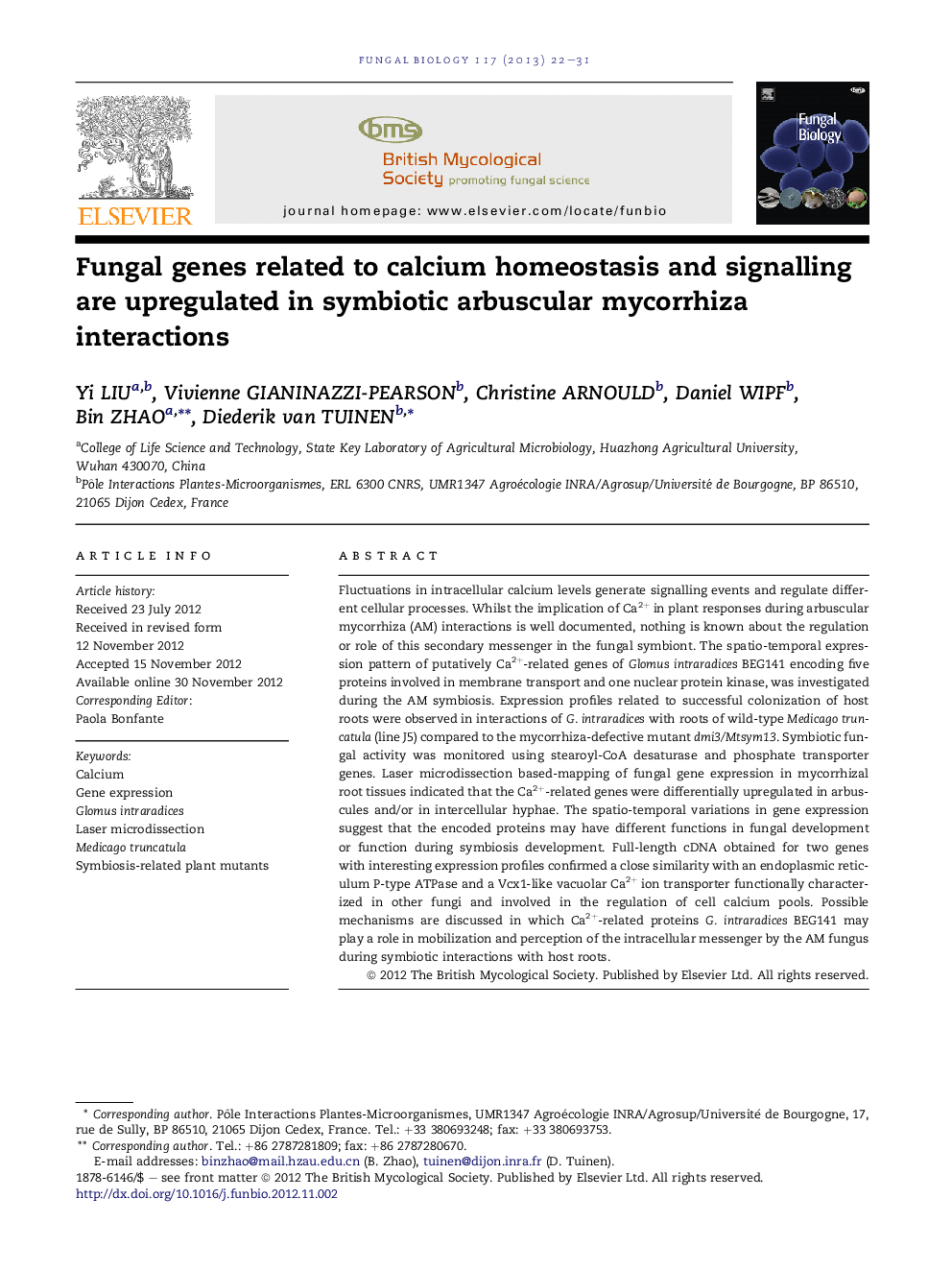| Article ID | Journal | Published Year | Pages | File Type |
|---|---|---|---|---|
| 4357086 | Fungal Biology | 2013 | 10 Pages |
Fluctuations in intracellular calcium levels generate signalling events and regulate different cellular processes. Whilst the implication of Ca2+ in plant responses during arbuscular mycorrhiza (AM) interactions is well documented, nothing is known about the regulation or role of this secondary messenger in the fungal symbiont. The spatio-temporal expression pattern of putatively Ca2+-related genes of Glomus intraradices BEG141 encoding five proteins involved in membrane transport and one nuclear protein kinase, was investigated during the AM symbiosis. Expression profiles related to successful colonization of host roots were observed in interactions of G. intraradices with roots of wild-type Medicago truncatula (line J5) compared to the mycorrhiza-defective mutant dmi3/Mtsym13. Symbiotic fungal activity was monitored using stearoyl-CoA desaturase and phosphate transporter genes. Laser microdissection based-mapping of fungal gene expression in mycorrhizal root tissues indicated that the Ca2+-related genes were differentially upregulated in arbuscules and/or in intercellular hyphae. The spatio-temporal variations in gene expression suggest that the encoded proteins may have different functions in fungal development or function during symbiosis development. Full-length cDNA obtained for two genes with interesting expression profiles confirmed a close similarity with an endoplasmic reticulum P-type ATPase and a Vcx1-like vacuolar Ca2+ ion transporter functionally characterized in other fungi and involved in the regulation of cell calcium pools. Possible mechanisms are discussed in which Ca2+-related proteins G. intraradices BEG141 may play a role in mobilization and perception of the intracellular messenger by the AM fungus during symbiotic interactions with host roots.
► Membrane and nuclear Ca2+-related genes of G. intraradices were investigated. ► Gene expression was profiled in wild type and mycorrhizal-defective M. truncatula. ► Tempo-spatial variations suggest different functions in fungal development/function.
